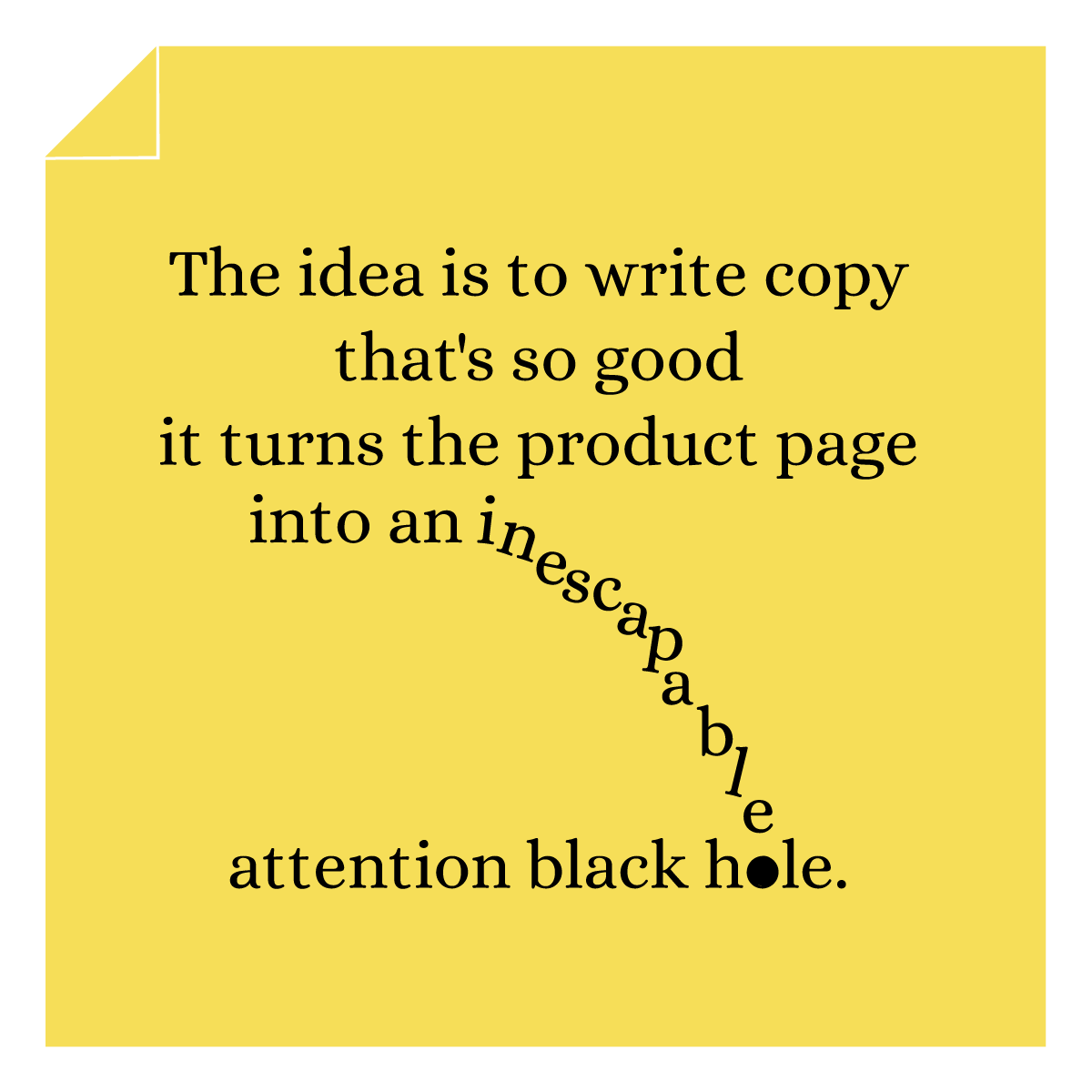Blog
Marketing Ethics: Persuasion Vs Manipulation
Persuasion Vs Manipulation: many people think the job of copywriting is to manipulate the buyer. These people are obviously wrong, and we’ll prove it. Keep reading.
If you prefer video watch this. If you prefer reading read the text below👇 the video. The choice is yours.
Some copywriters are uncomfortable pushing the limits.
They feel their boss is pushing them into manipulating the buyer.
They feel their job is holy.
According to them, the copywriter’s only job is to increase clarity and shine a light on the most valuable features of the product.
Horse shit.
This is the story bad copywriters and marketers tell themselves and their closest friends.
Mr. copywriter, just because you are feeling uninspired doesn’t mean the product doesn’t have a story.
The reason you are struggling to write inspiring copy is that you are lazy.
Because you haven’t truly understood what the product does.
You didn’t have to endure a desperate search to discover the product. You haven’t used your credit card to purchase it.
So you have no way of truly connecting with people who own this item.
You haven’t done enough to understand why the founder took the less-traveled path to create this new product.
You haven’t seen the 45 failed prototypes that led to the final breakthrough.
You don’t know the struggles.
Get off your high horse and see what these people are seeing. Stop complaining and start taking notes.
Persuasion Vs Manipulation Reality
If this was an unproven product I’d understand the skepticism. But the product is already a hit. Hundreds, thousands, hundreds of thousands of people are already buying it.
Our job— our only job— is to reverse engineering to understand why it’s so successful and use that knowledge to modify the sales pitch so more page visitors see it too.
Remember, this isn’t about your shopping habits. You may never be in the market for acne cream, but a self-conscious teen absolutely is.
Getting Excited
It’s hard to write about a product when you aren’t excited about it. I’m not super excited about welding:

But look at the image closely and you’ll see it has 2,706 reviews. So clearly, I’m in the minority. More importantly, my vote doesn’t count. The goal is to understand why people love this welder and use that to build our product story.
Here’s the process. Take your pen and start noting things that don’t seem:
— Impressive— Clear
Ask yourself, “Why doesn’t this sound impressive?” “How could it be clearer?”
Write down your thoughts.
1: Take a 24-Hour Break
Breaks have this transformative effect. What might seem confusing or unclear today can make sense tomorrow. So my advice is to stop the work and revisit it the next day. If on the next day the questions still feel relevant this is good news because it means we’re about to find answers that will make our sales pitch more persuasive.
2: Do Google Searches
To see what your site visitors are seeing Google keywords related to your product (“inverter welder”).
This will reveal how competing brands are presenting their sales pitch.
Read blog articles and scientific articles related to the problem your product is trying to solve.
In the 1900s only 7% of Americans brushed their teeth. Claude Hopkins (author of Scientific Advertising) raised that number to 75% by studying dental textbooks. The books were dry and boring but in the middle of one book, Claude found a reference to a phenomenon called mucin plaques on teeth. This gave him the idea of ‘the film’ which he used to construct one of the most successful campaigns of all time. Claude didn’t get this massive result by manipulating readers, he did it by identifying a selling angle no one else had bothered to unearth.

3: Read Customer Reviews
We need to walk in the shoes of our target audience. By reading customer reviews you’ll get to experience the frustration our customers felt before discovering this solution and the joy they experienced after they started using it. Here’s an example of a powerful customer review for a mattress:

As I was reading this review I was able to feel Jared’s pain but also the relief he experienced after purchasing the Purple mattress. Jared’s story will help me as I’m working on tightening the sales pitch of this product page.
Lorenzo and I have a YouTube series where we do tons of reviews mining. Here’s our channel.
4: Email Customer Service
In the section above we noted things that weren’t clear. Those questions need to be emailed to customer service. Make them work to extract a satisfying answer. If their responses aren’t great send a follow-up email and ask it in a slightly different way. Keep on digging.
5: Interrogate the Client
This is the final phase. You emailed customer service questions that weren’t clear. If some items still aren’t clear add them to the list of items that aren’t impressive. Now interview the client. Frame your concerns to the client and see how they respond to them. If their responses lead to more questions, explore them. Let the client know we’re not here to find fault, we’re here to better understand so we can craft a sales pitch that persuades the buyer versus comes off as being manipulative.
Keep on asking questions till you get to the gold. It’s there.
Don’t feel intimidated by all this. CHAPTER 4 presents a step-by-step process for how you can do this. For now, just continue reading.
Ultimate Goal

Next Steps
Many marketers would have stopped reading the moment it was suggested that they had anything in common with lawyers. You aren’t most marketers so thank you for sticking around. The next topic we’ll discuss is Conversion Copywriting Without User Research.




Comments 2
So true! This is great motivation
ReplyRishi Rawat
Great to hear from you, Sarah.
Reply